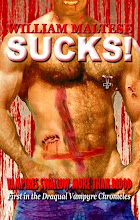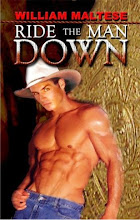

“Here’s a winery whose products benefit tremendously from its generosity in aging (its commercial reds, averaging two to three years in oak; its estate-bottled, ten years or more), especially in a state where the average Washington buyer seems intent upon having his wine from vine to barrel to bottle to table to belly in the shortest amount of time possible (most wineries out to cater to that buyer who’s even reluctant to let a newly opened bottle of any red wine air for an hour or so, preferring to run the wine directly through an aerator).”
—pg. 134, WILLIAM MALTESE’S WINE TASTER’S DIARY: SPO KANE/PULLMAN WASHINGTON WINE REGION
KANE/PULLMAN WASHINGTON WINE REGION
I’ve been accused of being jaded, and I admit to that probably being true. However, there are still some things in life that can get me all excited, and one was my recent opportunity to preview a new “Museum Blend” wine from one of the U.S.’s best wine-makers, Christine Havens, of Wawawai Canyon Winery in Pullman, Washington.
I still remember the first time I came across Christine, in the Palouse area of southeastern Washington State, off in the seemingly middle of nowhere with nothing apparently to recommend it but its acres of wheat fields, its yearly lentil festival, and my old alma mater, Washington State University. At the time, I was in the process of writing the first book of my WILLIAM MALTESE’S WINE TASTER’S DAIRY series, SPOKANE/PULLMAN WASHINGTON WINE REGION, for mainstream Wildside/Borgo Press, instigated by a comment by Bonnie Clark (my co-author in BACK OF THE BOAT COOKING and EVEN GOURMANDS HAVE TO DIET), made as regards as to whether or not I’d be interested in pairing some of our recipes with local Washington wines. My initial response had been: “Washington has wines?”
When I’d written my paper on the United States wine industry for my university marketing/advertising degree, there were no wineries of any note in Washington State. There were no wineries of any note in Oregon State. The wines of California were, at the time, still distant cousins to the superior French product.
Upon discovering that Washington State did, indeed, now, have a plethora of wineries, my initial tastings in an around Spokane, Washington, left me convinced none of them seemed to me of any particular note. In fact, it was late in the game that I finally visited Nodland Cellars to receive at least the hint that there may be some good wines possibly yet to be ferreted out by me from somewhere within the vicinity.
However, it took my road trip, with Bonnie and Bruce Clark, to Pullman, Washington, a couple hours drive outside of Spokane, and our stopover at Wawawai Canyon Winery, with wine-maker extraordinaire Christine Havens at the helm, that exposed me to some regional wines that I could, finally, favorably compare to the great French Chateau-bottled wines on which I’d grown up, and upon which I (call me a snob!), still continue to judge any of the wines I drink.
So, when I got the opportunity to pre-release taste Christine’s non-vintage red “Museum Blend”, 54% Cabernet Sauvignon, 23% Carmenere, and 23% Petit Verdot, its label not even officially unveiled at the time, from Washington State AVA, the wine made at the request of WSU’s planning team for the purpose of raising funds for the WSU Museum of Art, I jumped at the chance.
I drove the bottle over to the Clark’s house the day before drinking, because we wanted to make sure that it had time “to set” beforehand. As someone who has spent a good deal of time on boats, I know, from experience, that any wine can be unsettled by a lot of movement, including that provided by a car.
Our next-day opening of the bottle, and our smelling of the colorfully wine-stained end of its removed cork, provided us with an inhalation of residual aroma that was a genuinely inviting and enticing combination of cherry, blackberry, lemon-lime zest, and, surprisingly, at least to us, a hinted redolence of just-cracked fresh coconut.
While we had every intention of letting the bottle breathe for at least an hour after opening it, before passing any serious judgment on its contents, we each poured a small amount to taste, right then and there, by way of obtaining a comparison for later. Immediately, we were struck by a powerhouse palate of wondrous complexity that tempted us, even knowing any additional quick drinking would be a valid critique no-no, to fill our glasses and keep on drinking.
Waiting, though, for an additional hour and a half, despite temptation to imbibe sooner — and NOT cheating the natural airing process by calling upon the use of any aerator — we poured our glasses with a larger amount than the first time, for not the first time impressed by the wine’s attractively deep-red color that smelled, this time, even more intensely indicative of cherry and blackberry, with the additional but not disconcerting essence of licorice. Too, there was the even more predominant than earlier tantalizing aroma of cracked fresh coconut. Bonnie suggested the latter was the result of the wine having been aged in Hungarian, rather than American, oak barrels; American oak having a decided tendency, at times, to bestow smells (and tastes) hinting of pineapple. I had to admit to not having a clue, in that I’d tasted plenty of wines aged in Hungarian oak, and not experienced any similar pleasurable olfactory experience.
The twirled wine, in the bowl of our glasses, provided impressive ”legs” and made other sniffs of the contents even more intense and enjoyable.
Our follow-up tastings, then and there, had us all agree the wine was very French-like, very complex, and very wonderful, with the same nose and palate, only more intense, as we’d experienced when the bottle was first opened.
Our long and leisurely drinking process, allowing the wine to breathe even more, rewarded us with a kaleidoscopic drinking experience that continually provided varying and flavorful taste combinations.
Pretty much summed up by Bonnie who, near the end of the session, still with a bit of wine in her glass, commented that if she could only continue to smell and sip “Museum Blend”, all day long, she would be in Seventh Heaven.
All of us look forward to drinking more of this wine again, not only soon but in the years to come. Christine predicts it has enough acidity to cellar well for the next 5-6 years, probably at its optimal best in about 18-24 months. Bonnie, Bruce, and I, are planning to be sure to give it a try in 12-months’ time.
Therefore the good news for our fellow wine enthusiasts…
…who don’t want to wait, is that Museum Blend tastes exceptionally good, here and now.
…who want their wine drunk as soon as it’s opened, is that Museum Blend tastes exceptionally good (as mentioned) when first uncorked.
…who are also chocoholics, is that a piece of healthy chocolate Xocai™ XoBiotic Squares™, eaten while drinking this wine, provides a veritable super-delicious explosion of goodness on the taste buds.
Speaking of “explosions”, Bonne, Bruce, and I, miscalculated the wine’s alcohol “wallop”, thinking that had far more than the 13.5% it turned out to have.
To be officially released on September 29, 2011, during the “Jim Olson: Architecture for Art” opening reception at the Museum, for a mere $26 a bottle, 10% of that to the Museum of Art, its label designed by graphic artist Debbie Stinson, under the Wawawai Canyon brand, there’s no doubt in Bruce, Bonnie, and my minds that Museum Blend is unarguably any true wine-lover’s treat and exceptionally good bargain.
















